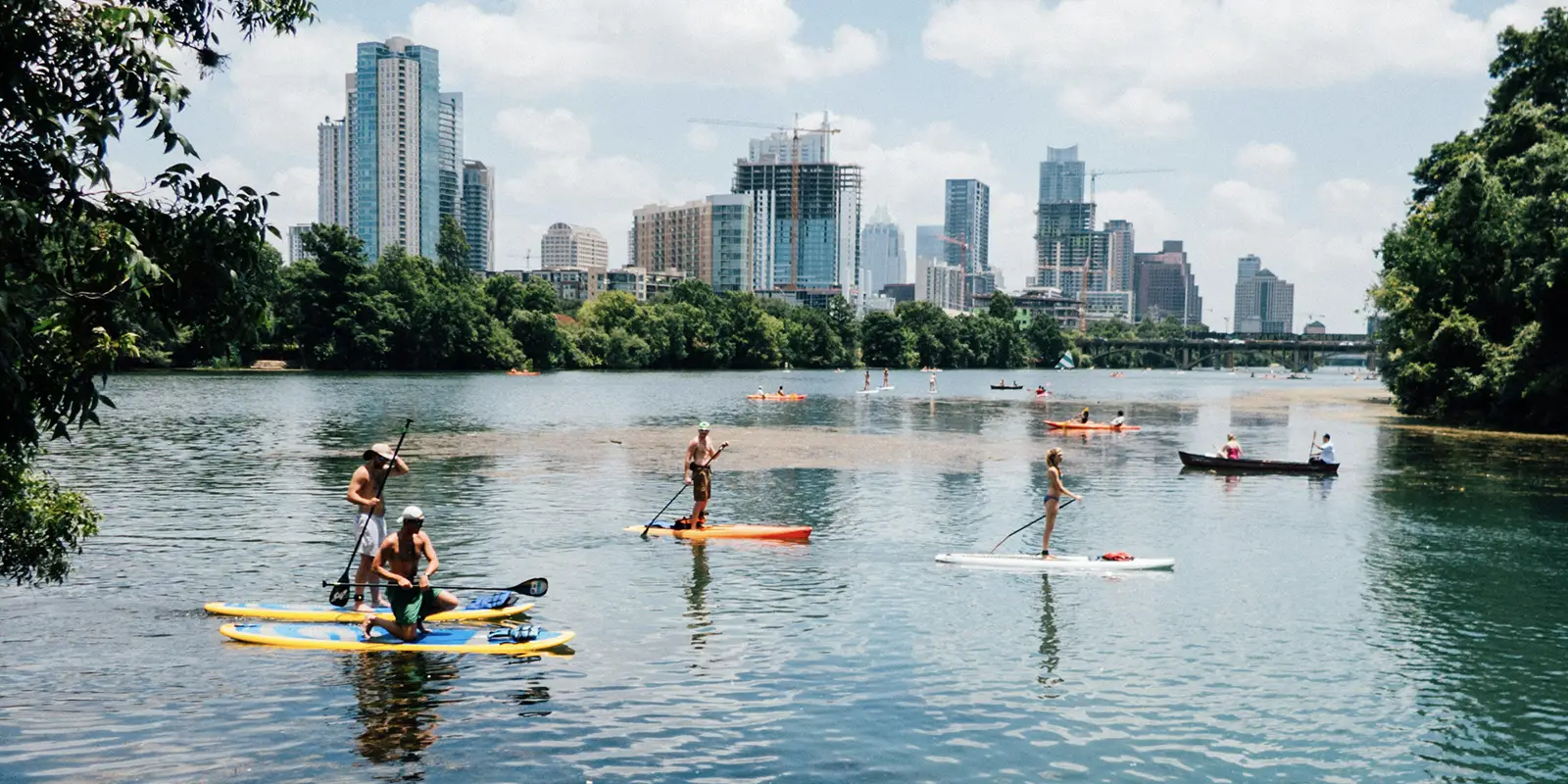Lady Bird Lake snakes along the Colorado River for five miles southeast of the Texas State Capitol in Austin. Most of Lady Bird Lake offers spectacular views of downtown Austin in a serene setting. Austin changed the name from Town Lake to Lady Bird Lake after former President LBJ’s wife, Claudia Alta Taylor ”Lady Bird” Johnson in 2011.
What Is Lady Bird Lake Known For?
Often called the “Crown Jewel of Austin”, Lady Bird Lake offers beauty, nature, and recreation to the capitol city of Texas. This reservoir was first called Town Lake after the completion of the Longhorn Dam in 1960. Diverse species of wildlife calls Lady Bird Lake their home.
Activities on this lake include bat watching, biking, canoeing, kayaking, and paddleboarding, picnicking, plus hiking and running and walking on the trail. Several of Austin’s most popular attractions lie adjacent to Lady Bird Lake, like Zilker Metropolitan Park and the Zilker Botanical Garden.
Apartments and hotels, civic and recreational buildings, and parks line the shores of Lady Bird Lake. Austin sees about 300 days a year of sunshine, so this lake is busy. It is typically the most crowded between 3 p.m. and 6 p.m. during weekdays, and sees most of its traffic on weekends and during special events.

Is it OK to Swim in Lady Bird Lake?
Unfortunately, swimming is prohibited in Lady Bird Lake, and not necessarily because of water quality. Water flows in strong currents through the lake, and when strong enough, it can shift boulders and tree limbs underneath the water. This can cause injuries or ensnarement to swimmers.
Can My Dog Swim in Lady Bird Lake?
The City of Austin recommends that visitors to Lady Bird Lake do not let their dogs swim in the lake. Lady Bird Lake has a track record of blue-green algae blooms, which is toxic to animals and people. One boat rental company requires pet owners to sign a sign a pet waiver that details the history of algae blooms and the current status of algae.
How Deep Is the Water in Lady Bird Lake?
Lady Bird Lake covers a surface area of 471 acres and maximum depth of 18 feet. Its average depth is between 10 and 16 feet, and there are some shallower and deeper areas.A “pass-through” or “flow-through” system operates on Lady Bird Lake. Water flows through the reservoir and down the Colorado River to Matagorda Bay.
Can You Eat Fish Out of Lady Bird Lake?
Yes, unless there is an advisory warning against eating the fish. The predominant fish species in Lady Bird Lake are largemouth bass, catfish, common carp, and several species of sunfish. The Texas Department of Health’s county offices issue advisory warnings if the fish in Lady Bird Lake are not safe to eat.
Are There Gators in Lady Bird Lake?
Yes, but they are not prolific. It is uncommon to spot gators in Lady Bird Lake. Alligators typically shy away from humans, and especially heavily trafficked areas around water bodies that provide habitats for gators. Lady Bird Lake is a popular and busy part of Austin, and not attractive to gators for nesting.
What Is the Difference Between Lake Austin and Lady Bird Lake?
Lake Austin is on the Colorado River north of Lady Bird Lake in Austin. It flanks the area west of downtown Austin. Gas-powered motorized boats are not permitted on Lady Bird Lake, but Lake Austin accommodates motorboats.
Lake Austin follows a 22-mile stretch of the Colorado River, and Lady Bird Lake is five-miles long. Several parks and public boat ramps provide public access on Lake Austin. Most of the shoreline on Lake Austin is privately owned, which limits bank fishing.







